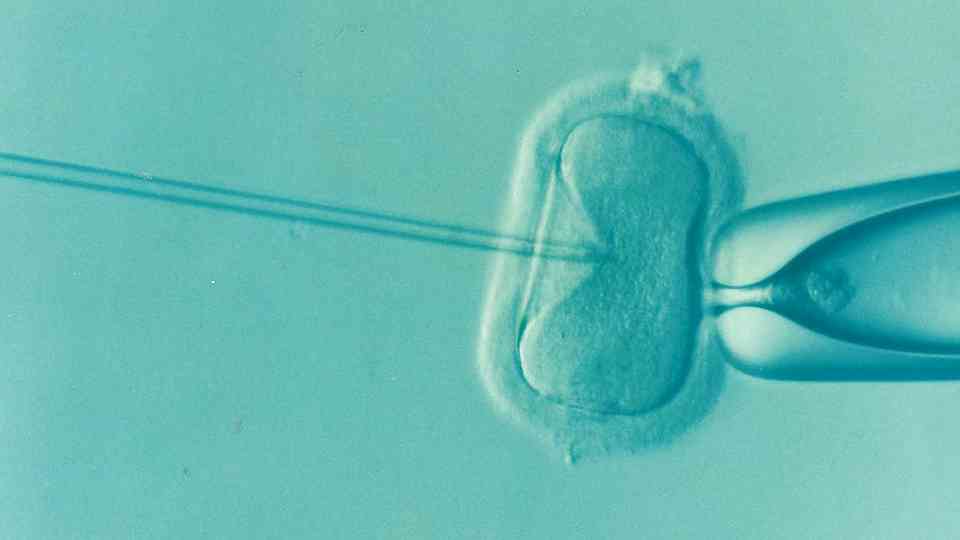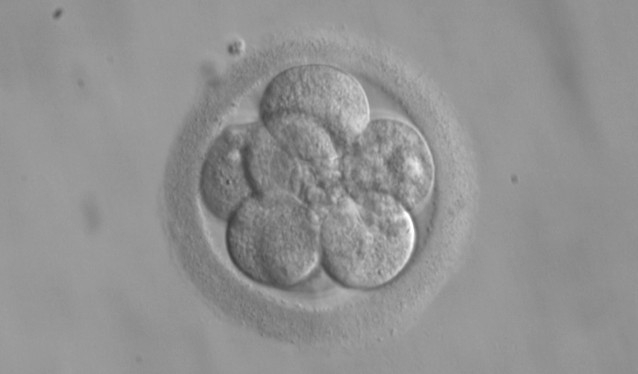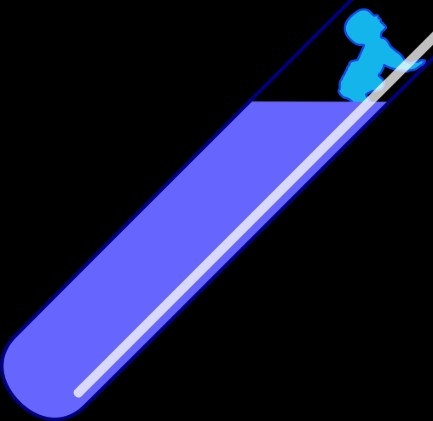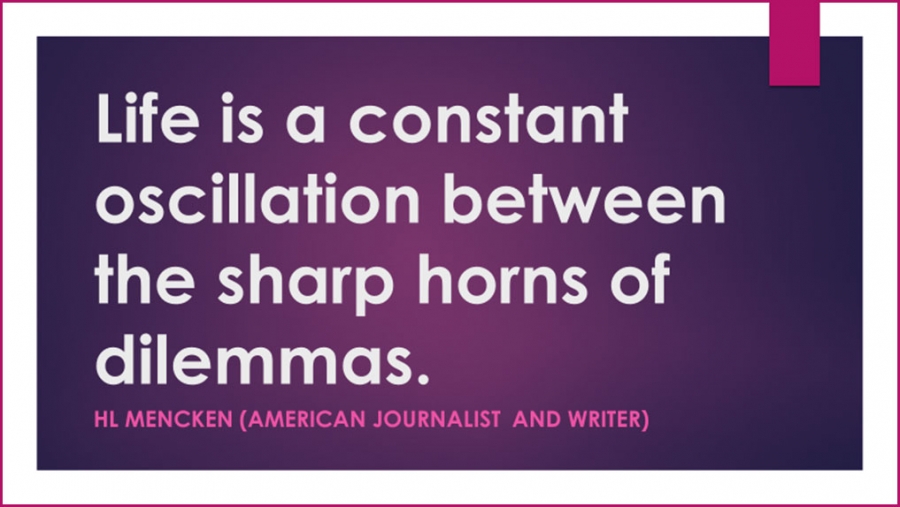Birth of a child is the happiest moment in a would-be parent’s life. An expecting mother waits for many months eagerly, waiting for the moment, when she would finally get to see her baby. Unfortunately, not all women are so lucky to have a straight forward conception and pregnancy. In today’s world, many women have difficulty conceiving naturally. Desirous of having a baby, they seek medical consultation and help of assisted reproductive technology, to have children. This story is also involving a similar incidence, where a couple decided to have a child, with the help of modern science. However, what makes this incidence special is the chain of events that was associated with rather a routine procedure.
The story revolves around a young couple from Tennessee (USA), who became proud parents of a baby girl on 25th November 2017, the baby being born as a result of Assisted reproductive technology that used, embryo that was frozen for Over 24 years, making it the longest gap between conception and actual birth, since the procedure of in vitro fertilisation (IVF) started.
Tina Gibson and her husband Benjamin had dreamt of becoming parents, but unfortunately, the husband had some medical issues, which came as a hindrance to a normal planned pregnancy. However, the National Embryo Donation Centre (NEDC) in America came as a boon, to the distraught couple. The rather not so old technique of Cryopreservation of Human Embryo’s enabled Tina Gibson, to become a mother by frozen embryo transfer (FET) carried out by NEDC Medical Director Dr. Jeffrey Keenan in March 2017.
What made this case special was that the new born daughter Emma Wren, was although born on 25th November 2017, but she was frozen as an embryo on 14th October 1992. The embryo had been donated by an anonymous couple, who had undergone in vitro fertilisation (where sperm from the male is united with an egg of mother, in a laboratory) and had decided to donate their unused remaining embryos, which had remained frozen for 24years. This makes this birth a record case; as here the longest frozen embryo on record (of 24 years) had given birth in a successful pregnancy.

The couple was overjoyed by the new addition to their family. Benjamin described his daughter as a sweet miracle and marvelled at how she could be frozen for so many years and still looks pretty perfect. Tina Gibson had remarked (who at the time of transfer was only of 25years) that if her daughter would have been born as per normal schedule (without being frozen for 24 years), she might very well have been her best friend. Although neither parent was biologically related to their new born child, but the bliss of becoming a parent, was clearly visible on their faces.
The above-mentioned incident is a modern-day miracle, which owes its success to the rapid advancement of modern medicine, which has given rise to in vitro fertilisation and Cryopreservation of Human Embryos. However, the journey to reach this far was certainly neither smooth nor easy. James Watson – one of the discoverers of DNA, was quite a sceptic about in vitro fertilisation and believed it will create a lot of political, social and moral dilemma.
The technology of embryo transplant has undergone many changes since the time when it was first introduced. In the initial stages, an embryo created in the laboratories by in vitro fertilisation was implanted in the would-be mother’s uterus right away. It took the scientists/doctors 6 years to perfect the freezing technique, after the birth of the world’s first test tube baby – Louise Joy Brown in 1978.

Up to 40% of patients, who undergo in vitro fertilisation have additional embryos, that they opt for freezing, which may be used later if they want to have a child. Frozen Embryo Transfer deals with taking these frozen embryos and placing them in a uterus, with intention of having a child.
The procedure of cryopreservation rather sounds very simple in theory. Embryos are frozen in solution, that prevents damage to the cells during freezing (cryoprotectant), and kept in storage tanks of liquid nitrogen at -196 degrees centigrade. At such a low temperature, all biological processes come to a stop. The physiological processes once again start when these embryos are thawed and later placed in a human uterus. However, like other technological advancements, the details of embryo freezing technology is also gradually evolving with time.
The world’s first baby from frozen embryo to be born, after Cryopreservation of Human Embryo was perfected, was born in 1984 in Australia (Zoe Leyland). However, compared to the above-mentioned case, this embryo had been frozen for a very short duration of 2 months. Since then the procedure has spread far and wide, all across the world. Birth from cryopreserved embryos that have been donated to another childless couple, is growing at an astounding rate of 25% every year.

Organisations like National Embryo Donation Centre, encourage people who have extra embryos frozen but are not desirous of having more children after completion of their family, to donate unneeded embryos to other childless couples, desiring to have children.
A lot of practical advantages have been obtained from using frozen embryo technology. Extra embryos which were not directly implanted into the uterus of the would be a mother, could now be preserved, instead of being discarded as was done earlier. This enabled doctors to have the flexibility to plan for the correct time for implanting them into a uterus.
It would also give time to the biological mothers to make up their minds if they wanted to save the embryos for later use or to discard them or give up their claim on the embryos. Freezing embryos allows screening for specific genetic defects. Finally, these embryos could be donated to childless couples as described above & thus enabling this blessing to touch other human lives.
In today’s world, innumerable human embryos are in a state of cryopreservation, stored in tanks of liquid nitrogen, at very cold temperatures. Unfortunately, if the biological parents of these embryos separate (due to death or divorce) difficult legal questions, regarding the ownership of the embryos, can arise unless clearly formulated previously. Even ethical questions like – if these embryos should be treated as – dead or alive, in case a decision to discard them has to be taken, in absence of biological parents, can raise complicated moral issues.

As mentioned before embryo freezing technology is also evolving with time, with different freezing techniques needing different thawing techniques, before implantation in the uterus can be done. New embryologists are less knowledgeable about the old freezing & anti freezing methods; which have contributed to the fear that embryo frozen since many decades may not be possibly thawed out later, as embryologist of that period, would not know how to thaw them.
Many people have found great inspiration, from the story of the Gibson couple. This would make many more people seek Frozen Embryo Transfer (FET) and Embryo adoption in the near future. However, many questions regarding the relatively new procedure still remain unanswered. One of the important one being – If availability of technical details of freezing & thawing of the embryo (and their knowledge) remains unaltered, how long frozen embryos can be stored? The answer to that still remains unknown.
The case of Emma Gibson was a record case of longest frozen embryo use, where the extremely long period of 24 years was tried successfully for the first time. Many experts believe that frozen embryos do not expire, or even if they do so, it would be after a very long time. If that is indeed so, then it would have far reaching consequences, that are even hard to think of; but more importantly, would humans playing god really benefit the society in the long run?